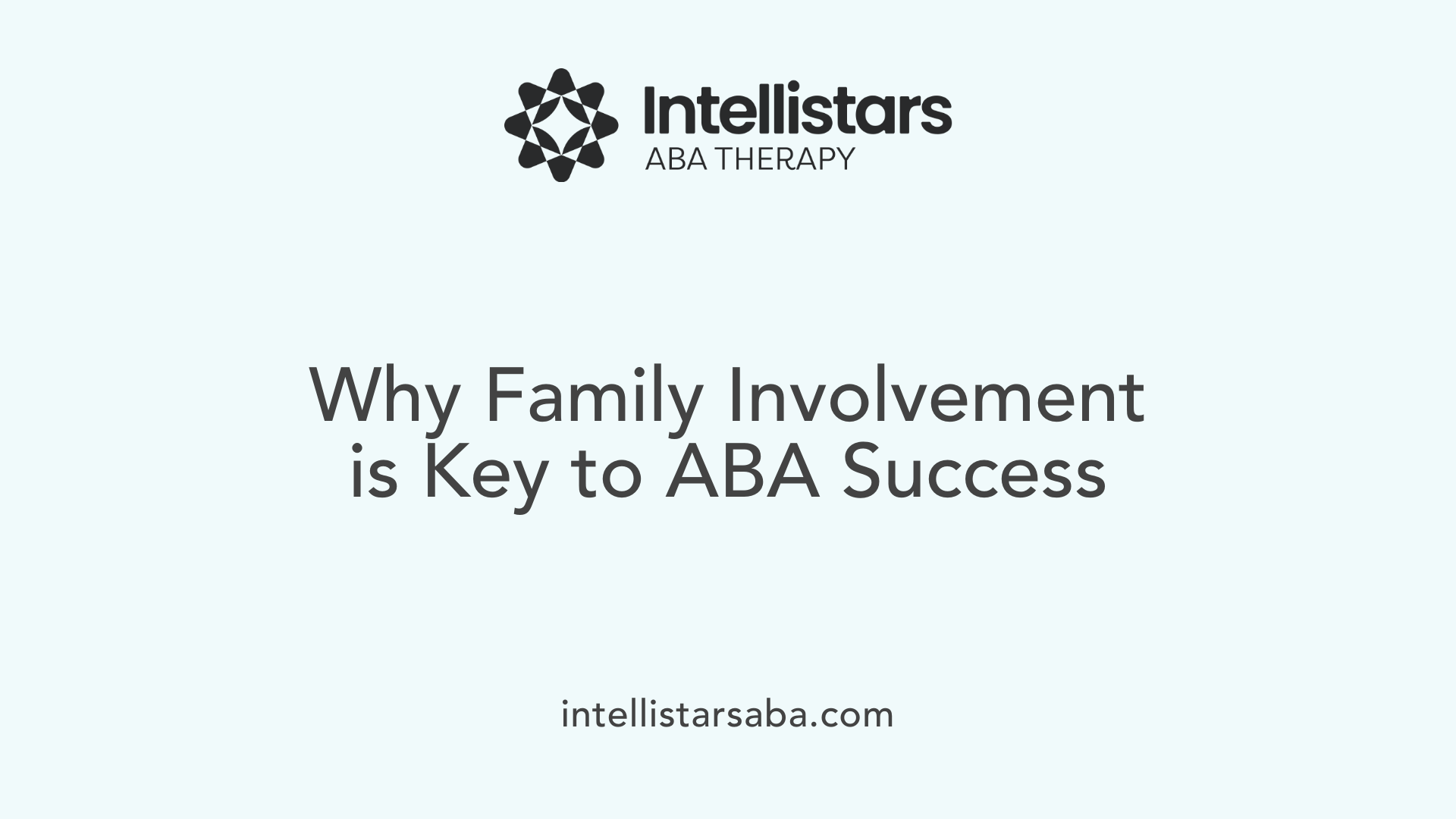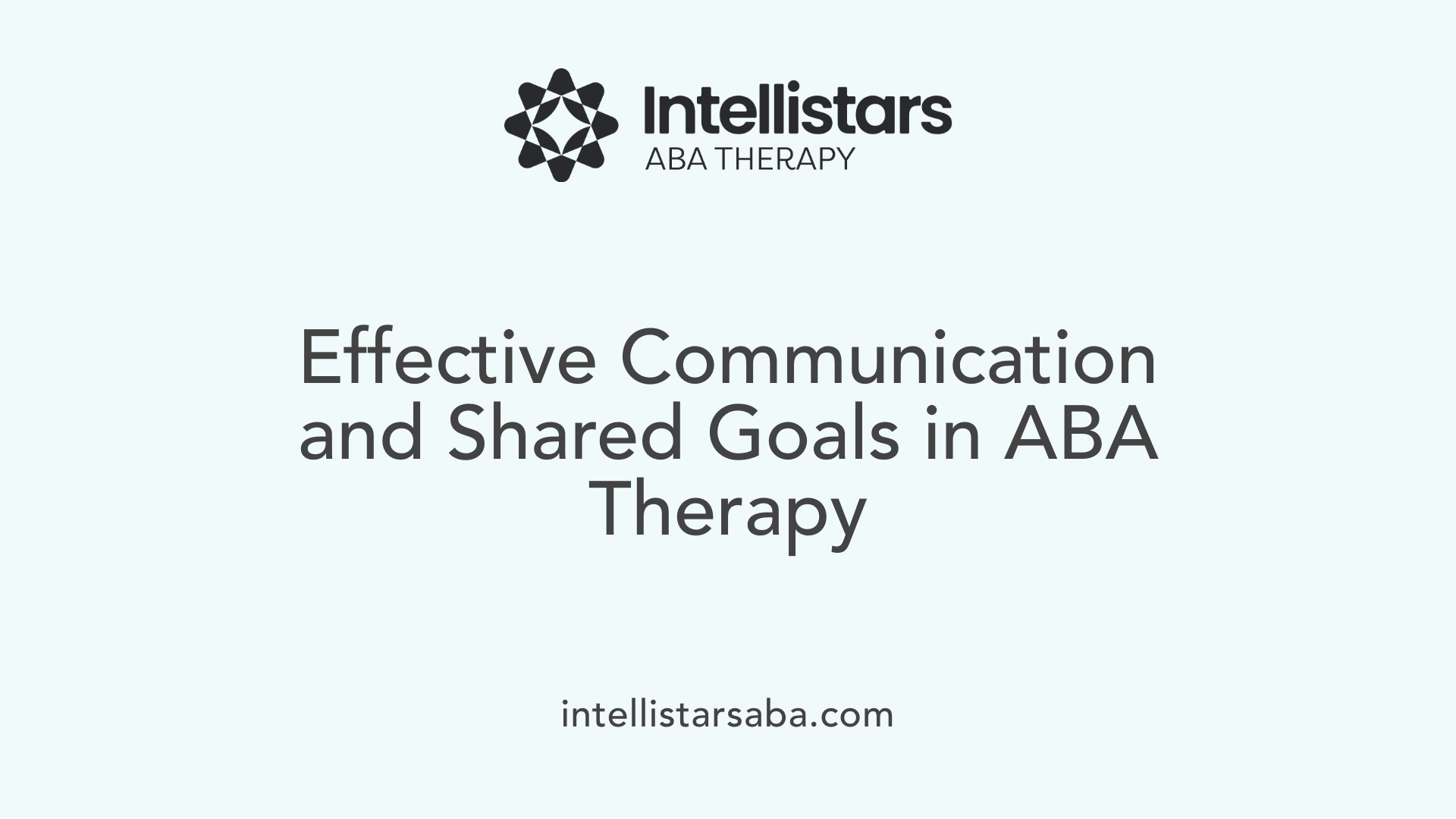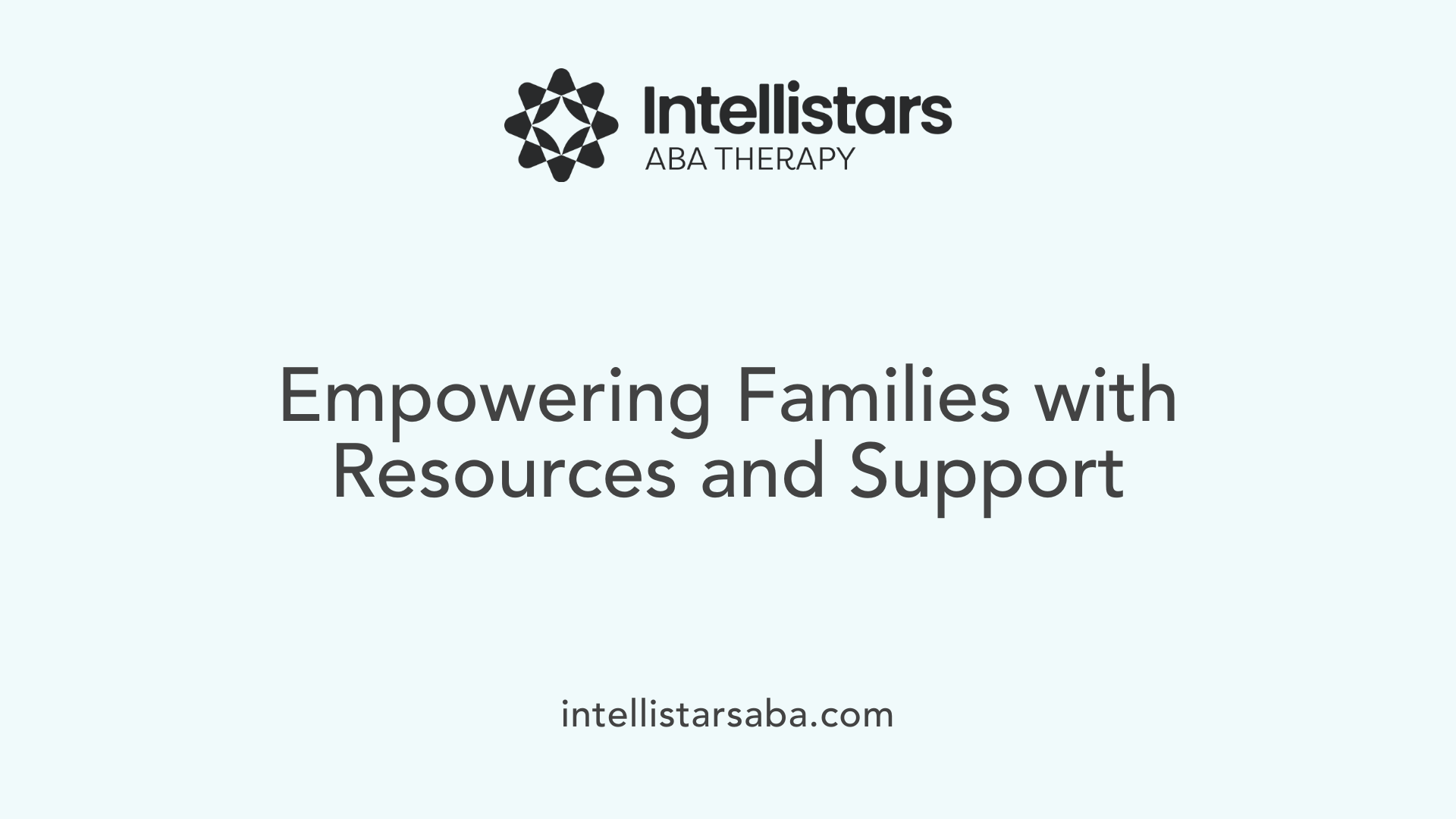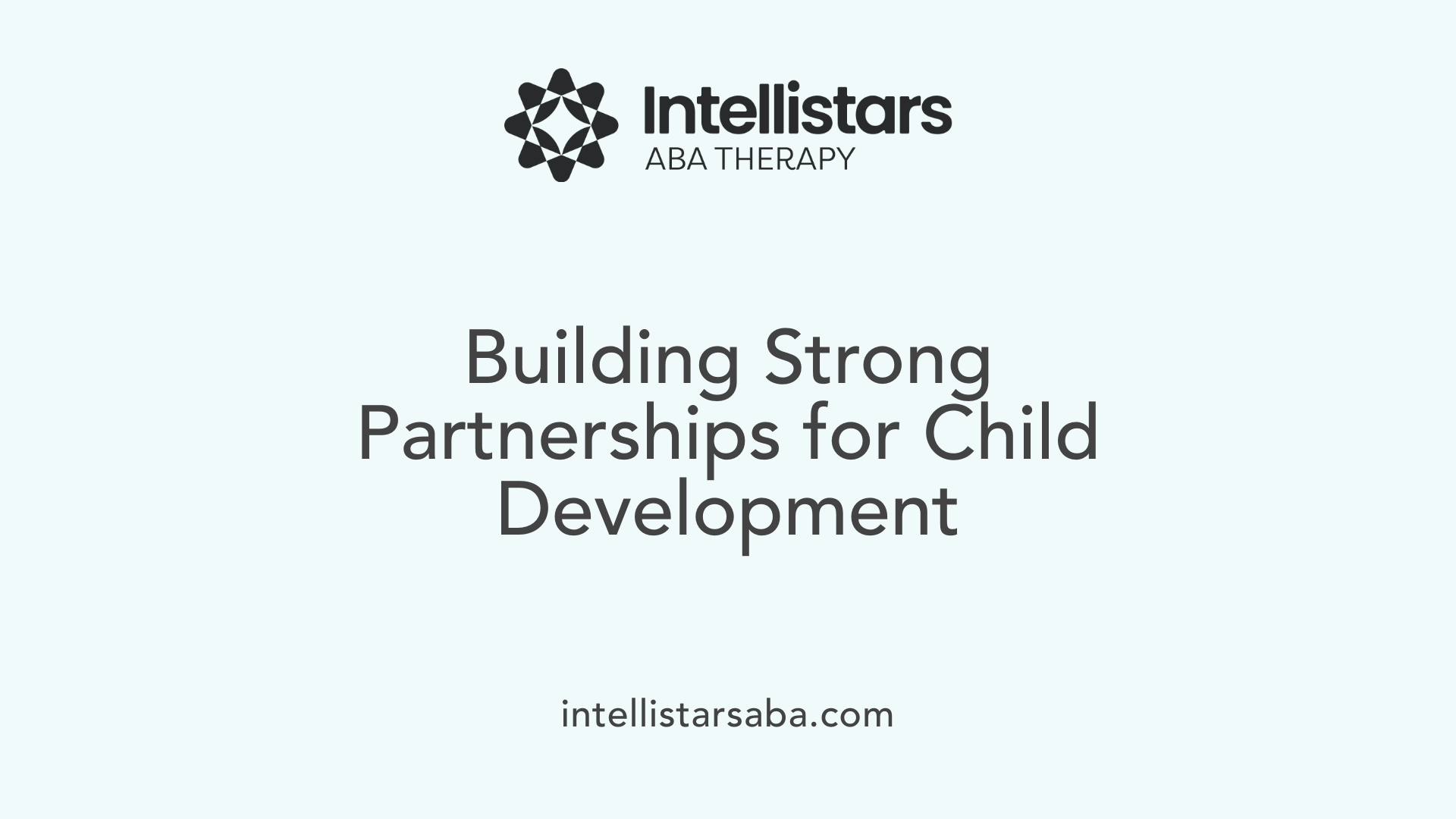Understanding the Power of Collaboration in Autism Support
Applied Behavior Analysis (ABA) therapy stands as a cornerstone intervention for children with autism spectrum disorder. Its success hinges not only on the expertise of clinicians but also on the active, heartfelt participation of parents. When families and therapists work as a cohesive team, they create a supportive environment that fosters meaningful progress, promoting skills acquisition, reducing challenging behaviors, and enhancing overall well-being. This article explores why ABA therapy is most effective when viewed as a collaborative effort, emphasizing strategies, shared goals, communication, and resources that empower families to become integral partners in their child's development journey.
The Foundations of ABA Therapy and the Importance of Family Involvement

What is ABA therapy, and why is parental involvement important?
Applied Behavior Analysis (ABA) therapy is an evidence-based approach aimed at helping children with autism spectrum disorder develop essential skills. The therapy primarily focuses on increasing positive behaviors such as communication, social skills, and independence while reducing harmful or challenging behaviors.
ABA therapists work closely with children through personalized, structured treatment plans. These plans involve techniques like positive reinforcement, shaping, and prompting to guide behavior change. Regular data collection helps monitor progress, allowing therapists to make adjustments for optimal results.
Parental involvement plays a vital role in the success of ABA therapy. When parents participate actively, they can reinforce learned skills in daily routines and natural settings, ensuring consistency across home, school, and community environments. This consistency enhances skill generalization and helps prevent regression.
Engaged parents also provide valuable insights to the therapy team about their child's behavior and preferences. Attending training sessions, observing therapy, and practicing strategies at home help parents understand the techniques used and support their child's development effectively.
Research confirms that children with engaged families tend to achieve faster, more meaningful progress. Active family participation fosters stronger emotional bonds, increases motivation, and reinforces positive behaviors, making ABA therapy more effective overall.
Strategies for Parents to Actively Engage in ABA Therapy
How can parents actively participate in ABA therapy to support their child's development?
Parents play a crucial role in the success of ABA therapy by actively engaging in various ways. One of the most effective methods is participating in training sessions provided by therapists or ABA specialists. These trainings teach behavior management, communication, and skill-building strategies rooted in ABA principles. By learning these techniques, parents gain the tools necessary to reinforce learned behaviors consistently at home.
Involvement doesn't stop at training; applying strategies in daily routines is essential. Parents can practice reinforcement techniques such as praise, access to preferred reinforcers, and creating structured routines during mealtimes, play, and transitions. This consistency helps maximize skill generalization and reduces challenging behaviors.
Additionally, observing therapy sessions allows parents to understand the methods used and see how their child learns. Regular communication with therapists, sharing observations, and discussing progress further enhance the collaborative effort.
Attending workshops, engaging in hands-on training, and seeking ongoing support build parents' confidence. Over time, this active participation leads to faster skill mastery, better behavior management, and strengthened emotional bonds.
Overall, parental involvement grounded in ABA strategies fosters a supportive environment that promotes sustained developmental progress for children.
The Critical Role of Communication and Shared Goals

What is the significance of communication and shared goals in a team approach to ABA therapy?
In ABA therapy, communication and shared goals are essential for creating a cohesive and effective support system for the child. Open and consistent dialogue among therapists, parents, teachers, and other caregivers ensures everyone is on the same page regarding strategies and progress.
When all team members participate in collaborative goal-setting, they develop clear, measurable targets that reflect the child's individual needs and strengths. This alignment helps tailor interventions that are consistent across therapy sessions, home routines, and school environments, maximizing the child's learning potential.
Regular updates and open sharing of observations enable the team to identify challenges early and make necessary adjustments. Visual supports and real-time feedback further enhance understanding and adherence to strategies.
By fostering a culture of ongoing communication, the team can proactively address issues, celebrate milestones, and motivate progress. This collaborative approach not only improves skill development and reduces problem behaviors but also builds trust and confidence among team members.
Ultimately, when communication flows smoothly and goals are aligned, children benefit from a unified support network that promotes faster learning, skill generalization, and better long-term outcomes.
Resources and Support for Families Engaged in ABA

What resources are available to help families participate effectively in ABA therapy?
Families seeking to actively support their child's ABA therapy have access to numerous helpful resources. Parent training programs are a fundamental starting point, teaching parents vital techniques such as behavior management, reinforcement strategies, and effective communication methods. These programs empower parents to confidently implement therapy strategies at home, creating consistency across environments.
Educational materials play a crucial role in supporting learning and reducing anxiety. Tools like social stories help children understand social norms, visual schedules provide structure, and the Picture Exchange Communication System (PECS) offers alternative communication methods. These resources make it easier for children to learn new skills and feel secure.
In addition, community support groups and online forums can be invaluable. They offer emotional encouragement, practical advice, and a shared sense of community. Parents can exchange experiences and tips, which often leads to increased confidence and resilience.
Technological tools also enhance parental involvement. Behavior tracking apps allow families to monitor daily progress, reinforce positive behaviors, and communicate effectively with therapists. Online platforms facilitate virtual meetings and resource sharing, helping families stay informed and engaged.
Collaborating with professionals like Board Certified Behavior Analysts (BCBAs) through workshops, training sessions, and ongoing consultations helps families tailor strategies specifically for their child's needs. This professional partnership ensures that families are well-equipped to create consistent, effective support systems at home, school, and community settings.
In sum, a combination of structured training, educational aids, peer support, and technology—along with professional collaboration—forms a comprehensive network that enhances family engagement in ABA therapy and, ultimately, promotes better outcomes for children.
Conclusion: Strengthening the Parent-Therapist Partnership for Child Success

How do collaboration benefits aid a child's progress?
Effective collaboration between parents and ABA therapists offers numerous advantages that directly impact a child's development. When both parties work in harmony, consistency in applying strategies increases, which helps children learn more quickly and retain skills longer.
One of the main benefits is improved generalization of skills. Children see their learning reinforced not just in therapy sessions but also at home, school, and within their community. This consistency creates a stable environment where behaviors are more easily maintained and developed.
Besides skill mastery, collaboration also boosts the child's confidence and motivation. Celebrating small successes along the way encourages children to continue trying new tasks and reduces frustration.
For parents, engaging actively in therapy provides a clearer understanding of effective techniques. This insight enables them to implement strategies at home, further reinforcing learning and behavior management.
On a broader level, cohesive teamwork fosters stronger trust and respect between families and therapists. Regular communication, shared goals, and mutual feedback ensure everyone stays aligned, making the intervention more personalized and impactful.
Research supports these benefits, indicating that children whose parents actively participate in ABA therapy tend to make faster, more meaningful progress. Such collaboration not only accelerates skill development but also promotes emotional bonds, creating a supportive environment conducive to growth.
Why is ABA therapy considered a collaborative effort between parents and therapists?
ABA therapy’s success hinges on consistent, coordinated efforts from both parents and clinicians. It isn't solely about the therapist guiding the child but involves parents in every step of the process.
Parents provide invaluable insights into their child's routines, preferences, and underlying needs, which help tailor interventions effectively. Their involvement in therapy sessions and the application of learned strategies at home bridges the gap between structured sessions and daily life.
Open communication forms the backbone of this partnership. Sharing observations, discussing progress, and adjusting goals as needed ensures the strategies remain relevant and effective. Regular check-ins and feedback loops keep the team aligned and proactive.
This joint effort not only enhances learning outcomes but also supports emotional reassurance for children, making them feel more secure. It encourages parental confidence and fosters a sense of teamwork.
Ultimately, a reciprocal relationship built on respect and ongoing engagement creates a personalized, sustainable approach to therapy. This collaborative framework maximizes a child's potential for development, independence, and happiness.
| Benefit | Description | Additional Insight |
|---|---|---|
| Skill Generalization | Skills learned in therapy are effectively transferred across settings | Reinforced at home, school, and community |
| Motivation & Confidence | Celebrating progress boosts self-esteem | Encourages continued participation |
| Parental Understanding | Parents learn effective behavior management | Better support outside of therapy |
| Consistency | Coinciding strategies create a stable environment | Averts regression and promotes skills |
| Emotional Bonds | Strengthened relationships between child, parents, and therapists | Builds trust and cooperation |
Recognizing these benefits underscores the importance of active parent-therapist collaboration in achieving meaningful, lasting improvements in children with autism spectrum disorder.
The Power of Teamwork in Achieving Lasting Change
The path to success in ABA therapy is rooted in teamwork. When parents and therapists unite with shared goals, open communication, and a commitment to the child's growth, they create a powerful support system that transcends sessions. This collaborative approach ensures consistency, reinforces learning across all environments, and adapts strategies to meet evolving needs. Equipping families with education, resources, and active engagement opportunities transforms them from passive observers into empowered advocates for their child's development. As evidence continues to demonstrate, the strongest outcomes in autism support arise when a dedicated, cohesive team—centered on the child's best interests—collaborates tirelessly to foster skills, build confidence, and celebrate progress, no matter how small. The collective effort ultimately leads to more effective, meaningful, and lasting change.
References
- How ABA Therapists and Parents Can Collaborate for Maximum ...
- The Role of Parent Involvement in ABA Therapy - Radical Minds
- Impact of ABA Therapy: The Key Role of Parental Involvement
- Collaborating with ABA Therapists: A Guide for Parents ... - Able Kids
- Should Parents Stay During ABA Therapy Sessions?
- Teamwork and Collaboration in ABA Therapy for Children with Autism
- The Role of Parent Involvement in ABA Therapy






